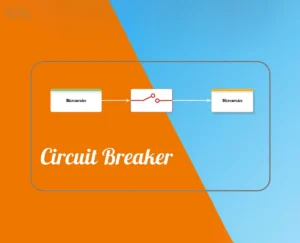Cross-border M&A 2025 stands as a defining moment for companies aiming to accelerate growth by expanding beyond domestic markets. After a period of subdued activity, international mergers and acquisitions are rebounding strongly, propelled by evolving market dynamics, regulatory shifts, and transformative technologies such as AI-powered deal analytics. Navigating the complexities of international finance, regulatory environments, and deal structuring is essential for firms seeking to harness global capital flows and seize new market expansion opportunities. This article delves into the latest trends shaping cross-border M&A in 2025, advanced strategies for success, and how Amquest Education’s Investment Banking, Capital Markets & Financial Analytics course equips professionals with the skills needed to thrive in this dynamic landscape.
The Evolution of Cross-Border M&A
Cross-border M&A has long served as a strategic lever for companies to overcome saturation in domestic markets, diversify portfolios, and access cutting-edge technologies and talent. Over the last decade, globalization and digital transformation fueled a surge in international dealmaking. However, recent geopolitical tensions and tariff policies introduced uncertainty and complexity. In 2024, cross-border M&A activity surged notably, signaling strong momentum heading into 2025.
According to Goldman Sachs, transactions between the US and Europe accounted for 44% of global volumes, highlighted by marquee deals such as DS Smith’s $9.8 billion sale to International Paper and Abu Dhabi National Oil Company’s $18 billion acquisition of Covestro in Germany. Meanwhile, the Asia Pacific region contributed approximately 30% of global transaction volumes, with countries other than China stepping up as China’s domestic M&A activity slowed.
Latest Features and Trends Shaping Cross-Border M&A in 2025
Market Dynamics and Regional Capital Flows
Despite a 9% decline in global M&A volumes during the first half of 2025, deal values increased by 15%, reflecting a strategic shift toward fewer, larger transactions. The Americas led with $908 billion in deal value, driven by strong domestic activity alongside rising inbound investments from Asia Pacific and EMEA regions. Notably, APAC buyers more than doubled their investments into the Americas, highlighting growing cross-border capital flows. EMEA buyers, while experiencing a slight overall decline, increased spending in the Americas and APAC, reallocating capital toward higher-growth and more accessible markets — underscoring the importance of geographic diversification in current investment banking deals.
Regulatory and Geopolitical Considerations
Trade tensions and tariff uncertainties, especially involving the US, tempered deal enthusiasm in early 2025. However, growing optimism around potential tariff resolutions and easing interest rates is expected to stimulate dealmaking in the latter half of the year. To navigate these challenges, companies are adopting sophisticated deal structuring strategies, such as forming joint ventures or establishing local operations to circumvent tariffs and regulatory hurdles. Geopolitical risk remains a critical factor, with firms proactively mitigating exposure through flexible deal terms and currency hedging — essential tactics in cross-border investments and international finance.
The Growing Role of Technology and AI in Dealmaking
AI-powered learning and analytics are revolutionizing investment banking deals by enabling faster, data-driven decision-making and risk assessment. Firms leveraging AI tools can more accurately identify acquisition targets, value synergies, and streamline due diligence processes. This technological edge is transforming how deals are structured and executed.
Amquest Education’s Investment Banking, Capital Markets & Financial Analytics course incorporates AI-led modules that blend theoretical frameworks with hands-on application. Students gain practical experience with AI-driven deal analytics, preparing them for the complexities of cross-border M&A 2025 and beyond.
Advanced Tactics for Success in Cross-Border M&A
- Strategic Deal Structuring: Customize deal terms to local regulatory frameworks and tax regimes, optimizing compliance and value creation. Incorporate flexible clauses to manage geopolitical and currency risks effectively.
- Cultural and Operational Integration: Prioritize cultural alignment and operational excellence post-merger to ensure sustainable success. The $8.8 billion acquisition of Meggitt PLC by Parker Hannifin exemplifies how teamwork and innovation drive integration success.
- Leveraging Technology: Utilize AI and data analytics to uncover emerging market trends, enhance due diligence, and accelerate decision-making.
- Risk Mitigation: Employ hedging strategies and adaptable deal terms to address geopolitical volatility and currency fluctuations.
- Sector Consolidation: Focus on consolidating within sectors to reduce cost pressures, improve competitive positioning, and unlock new value sources.
- Incorporating ESG Considerations: Integrate environmental, social, and governance factors into deal evaluation and structuring to meet evolving regulatory demands and investor expectations.
The Power of Storytelling and Community in M&A
Effective communication during M&A drives stakeholder engagement and smooth integration. Sharing success stories and leveraging networks—including industry partners and alumni—builds trust and fosters collaboration. Amquest’s program emphasizes these soft skills alongside technical expertise, preparing professionals for real-world challenges in global mergers and acquisitions.
Business Case Study: Microsoft’s Strategic Acquisitions in 2022
Microsoft’s acquisition of Minit, a process mining company, illustrates the strategic use of cross-border M&A to maintain technological leadership. By enhancing its Power Automate platform, Microsoft strengthened its position in robotic process automation, a rapidly growing segment experiencing global consolidation. This example demonstrates how international finance and cross-border investments can fuel innovation and market expansion.
Measuring Success: Analytics and Insights
Tracking key metrics such as deal value growth, integration efficiency, and market share gains is essential. AI-powered analytics provide real-time insights into deal performance and market conditions, enabling agile adjustments to strategy.
Actionable Tips for Marketers and Dealmakers
- Conduct thorough due diligence using AI-enhanced tools to reveal hidden risks and opportunities.
- Develop flexible deal structures to accommodate regulatory and geopolitical uncertainties.
- Invest in cultural due diligence to ensure smooth post-merger integration.
- Build strong partnerships with local firms and industry experts to navigate foreign markets.
- Leverage ongoing data analytics to monitor deal performance and market trends.
- Incorporate ESG factors into deal evaluation and integration plans.
Why Choose Amquest Education for Investment Banking and Cross-Border M&A Mastery?
Amquest Mumbai offers a cutting-edge Investment Banking, Capital Markets & Financial Analytics course featuring AI-led modules that combine theory with practical internships. With national online availability and a faculty comprising seasoned industry professionals, the program equips students with future-ready skills tailored to the complexities of cross-border M&A 2025. Its comprehensive curriculum, real-world case studies, and strong industry connections create unparalleled opportunities for professional growth and placement.
Conclusion
Cross-border M&A 2025 presents exceptional opportunities for companies to unlock global growth through strategic international finance, advanced deal structuring, and technology adoption. Despite regulatory and geopolitical challenges, evolving market dynamics and AI-powered analytics are fueling a resurgence in global mergers and acquisitions. Professionals aiming to lead in this space will benefit from advanced education integrating AI with practical investment banking skills—qualities exemplified by Amquest’s premier course. For those ready to master cross-border M&A and capitalize on global market expansion, enrolling in this program is a decisive step toward success.
FAQs
Q1: What are the key factors driving cross-border M&A 2025?
A1: Key drivers include market expansion needs, technological innovation, regulatory shifts, improving macroeconomic outlooks, and AI-powered deal analytics enhancing decision-making.
Q2: How does international finance influence cross-border M&A?
A2: It facilitates capital flows across regions, enabling acquisitions that diversify portfolios and expand market reach, while requiring complex deal structuring to manage currency and regulatory risks.
Q3: What are common regulatory challenges in cross-border M&A?
A3: Varying antitrust laws, tariffs, foreign investment restrictions, and compliance with local tax regimes require tailored deal structures.
Q4: How can companies leverage AI in cross-border M&A?
A4: AI aids in target identification, due diligence, risk assessment, and post-merger integration analytics, accelerating and improving deal quality.
Q5: What role do cultural factors play in cross-border acquisitions?
A5: Cultural alignment is critical for operational integration and employee engagement, impacting the success of post-merger consolidation.
Q6: How should companies manage currency and geopolitical risks in cross-border deals?
A6: Through hedging strategies, flexible deal terms, and establishing local operations or joint ventures to mitigate exposure.
Q7: Why is Amquest Education’s course ideal for professionals pursuing careers in global mergers and acquisitions?
A7: The course offers AI-led modules, practical internships, expert faculty, and a Mumbai base with national online access, uniquely preparing students for the challenges of cross-border M&A 2025.










